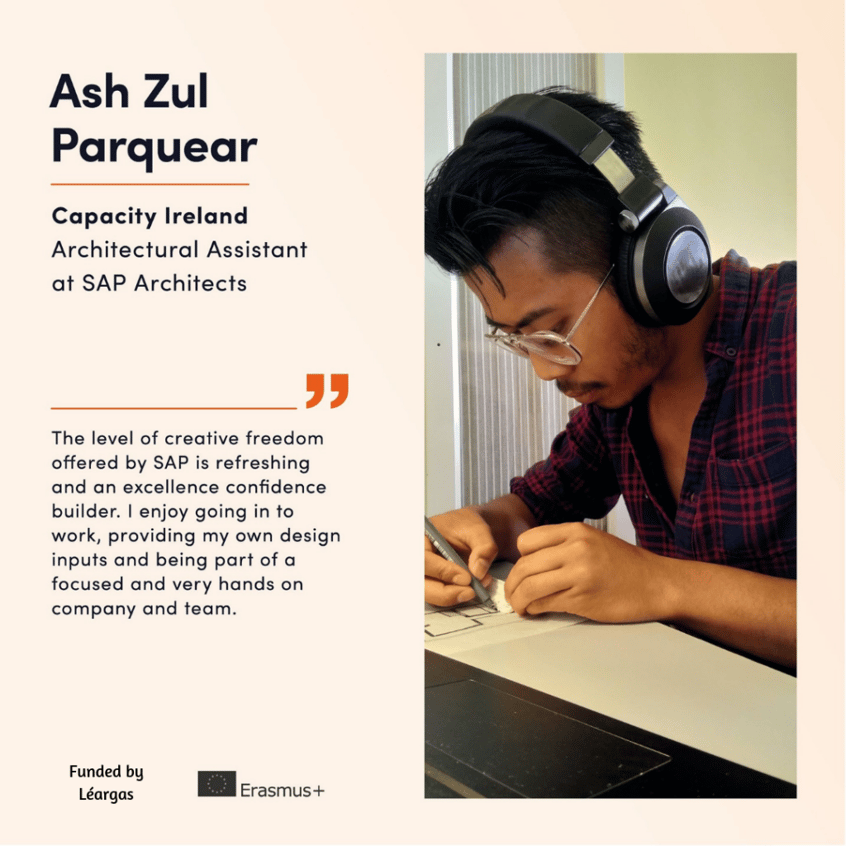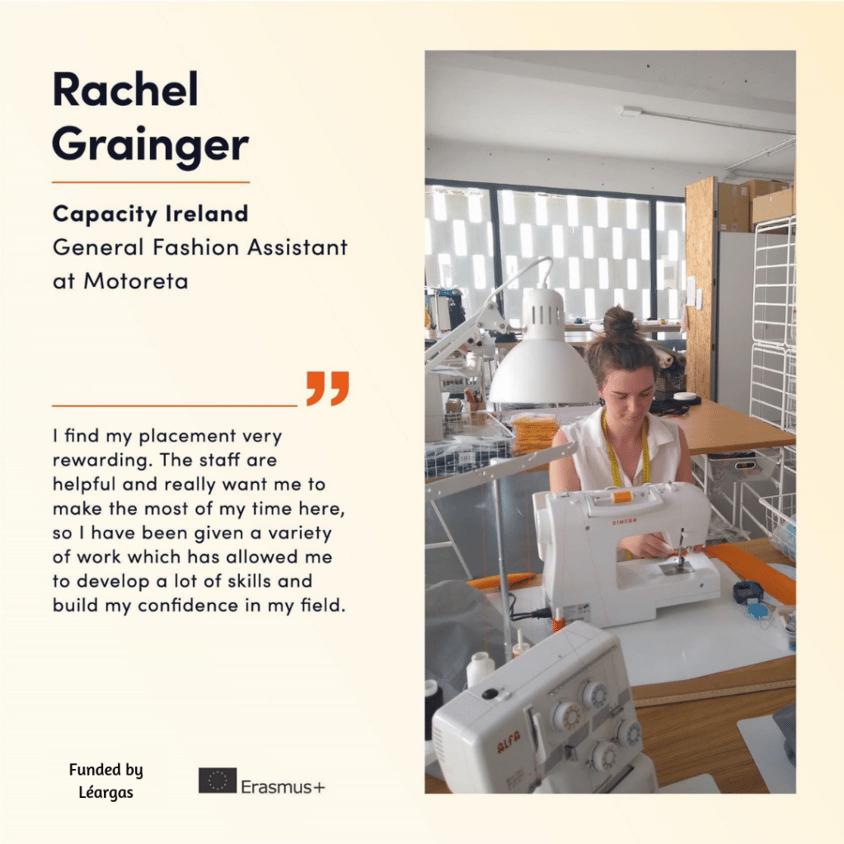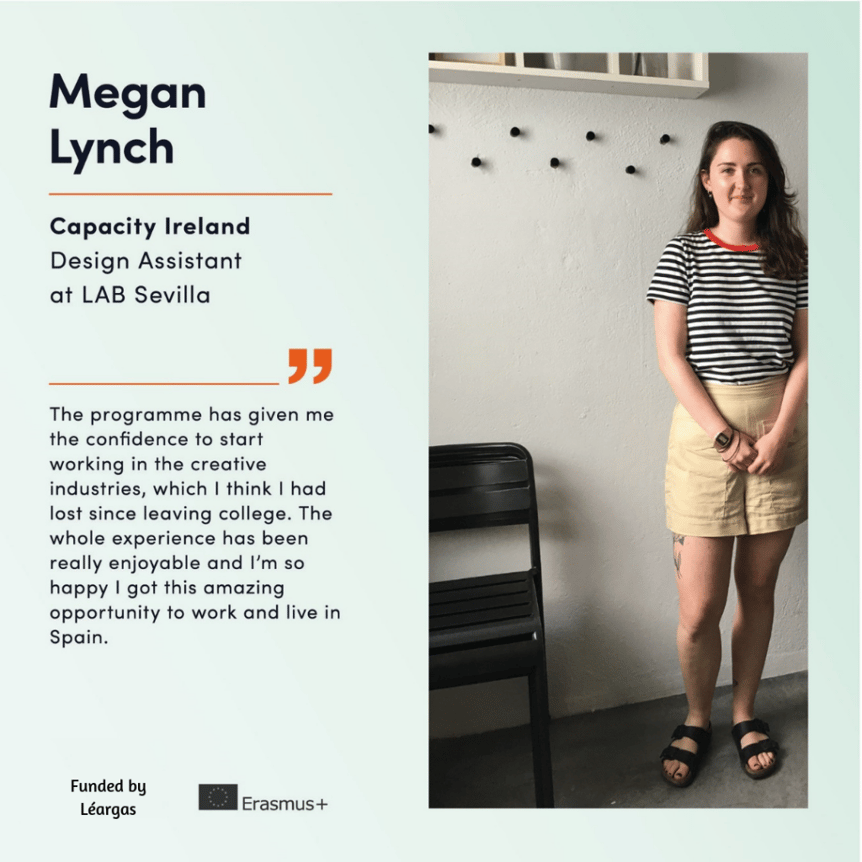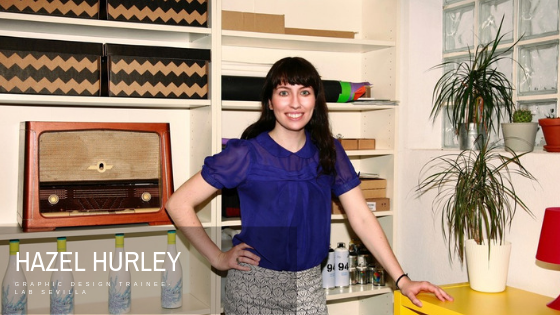Erasmus+ VET Dissemination: Using Case Studies to Engage your Audience
 Georgina Heffernan is Communications Manager with Capacity Ireland, a community-based vocational training organisation that provides work placements in Creative Industries, Digital Media and Community Development through Erasmus+ VET Mobility funding. Georgina is a former journalist and magazine editor, who has received the Gladys McNevin Trophy for PR excellence from the Public Relations Institute of Ireland. In this post, she discusses why Capacity Ireland use participant case studies in their dissemination strategy and gives advice on how to tailor content to reach different audiences.
Georgina Heffernan is Communications Manager with Capacity Ireland, a community-based vocational training organisation that provides work placements in Creative Industries, Digital Media and Community Development through Erasmus+ VET Mobility funding. Georgina is a former journalist and magazine editor, who has received the Gladys McNevin Trophy for PR excellence from the Public Relations Institute of Ireland. In this post, she discusses why Capacity Ireland use participant case studies in their dissemination strategy and gives advice on how to tailor content to reach different audiences.
Why Use Case Studies?
Case studies are a powerful tool in our dissemination strategy at Capacity Ireland. They combine several elements that engage and motivate our target audience. Like testimonials, they are evidence from an outside source that our mobility placements have enhanced participants' career prospects and, perhaps, even their worldview. Essentially, we see a case study as form of recommendation that not only positions us as a trustworthy organisation but also begins building an emotional connection with the right prospective trainees.
Case studies are more personal and compelling than old-school testimonials because they give people a greater opportunity to see how our Erasmus+ mobility projects in Seville and Marseilles can benefit them. A case study, when written well, is also a story. People love stories! We get hooked in and intuitively cheer on the protagonist. As an audience listens to or reads a story, they will put themselves in the participant’s shoes and feel as if they are sharing the adventure themselves. This certainly helps bring the Erasmus+ experience to life.

 Types of Case Study
Types of Case Study
So how do we gather our information? We work closely with our host employers, such as La Claqueta and Todomuta Design Studio in Seville, to help us tell the stories of our trainees and the organisations they are working with. As an accompanying person, based between Ireland and Seville, I also have the advantage of being physically close to the students, so I'm ideally placed to follow their Erasmus+ journey through each step.
What does an 'ideal' case study look like? It should tell the story of how a learner solved some problem or overcame an obstacle by participating in our training - and it is also the story of both personal and professional growth, which adds colour and authenticity to the interview. A case study concludes by explaining the outcome and impact of the experience, whether a new job offer, a move overseas, an expanded worldview or even the generation of a new business idea.
We gather information in a variety of ways, from asking participants to answer a questions by email, to encouraging them to submit blog posts and photo essays, to prompting them to take part in video interviews or photo-shoots. In almost all of our interviews, we focus on providing an overview of Erasmus+ life, key skills acquired during the mobility and the concrete benefits of qualifying in the specific subject area.
 Video is King
Video is King
We've come to realise that it's more challenging now than ever before to get people to read content. Generation Z-ers, multitasking between different apps and activities, have a shorter attention span than previous generations. Today, prospective trainees are more likely to watch a video than they are to read a lengthy case study. A video is helpful for those with little time and helps people to consume 'snackable' social media content about our projects. Better yet, video production is more cost-effective than ever and you can now shoot in high-quality, 4K video with your smartphone. This makes user-generated content (learners telling their own stories as creators) an exciting prospect.
Here are two case study video interviews we've created with former participants, Adam Carr and Ebony Corcoran:
Take Photographs!
While video is ideal, sometimes it's not possible to arrange. In these cases a few photos really help your case study. Be sure to include photos of learners actively engaged in their work placements or exploring a new city, as these are most effective in project dissemination. Try to take pictures that demonstrate each element of the case study—the challenge, solution and result—and make sure that you have permission to share the images publicly. Consider ways to incentivise learners to generate visual content themselves. This will not only add a layer of authenticity to your marketing efforts, it will also help learners to become ambassadors for your company through their own social media networks.
Tailor Your Content
One of the key challenges of education marketing is that the same content is served to different audience segments, all of them with contrasting expectations and needs. This has presented us with a few challenges and we've had to work hard to present our information in diverse ways to diverse audiences. Serving the same content to multiple target groups leads to an average dissemination strategy and poor results.
Word-of-mouth and authentic recommendations by our peers remain the most effective dissemination tools, but we use a mix of social media and traditional marketing methods to ensure that our message reaches the right people, in the right context and at the right time. Sometimes that might mean pitching a story to the national press, and at other times that can also mean sharing our research on a platform such EPALE.
You can pitch your case study to stakeholders who might publish it 'as is', but you can also use it in a variety of ways to build new content. Use your gathered quotes to write a story about how people are benefitting from your project and training, write an article and use the case study as an example of good practice, or connect a couple of case studies together to make a feature story.

Sharing on Social
Once we publish a case study, the logical next step is to write a blog post about it to expose our audience to it. The trick is to write about the case study in a way that identifies with our audience’s needs. So rather than titling our post “Capacity Ireland: A Case Study," we try to write about a specific hurdle, issue, or challenge the participant overcame, and then use that particular case study to target a niche audience. We can then expand its reach by sharing it on social media.
'An Invaluable Asset'
Case studies are an invaluable asset when it comes to establishing social proof that what you're offering is valuable and of good quality. Whether you're looking for relevant content to add to your blog, website or social media channels, your former participants and current trainees are the ultimate ambassadors for your organisation.
Find out more
You can see the Capacity Ireland communication strategy in action here:
linkedin.com/in/capacityireland
Find out more about Capacity Ireland on their website
Explore Erasmus+ mobility for vocational learners here
Images courtesy of Capacity Ireland. We welcome contributions to 'Insights' at comms@leargas.ie.

